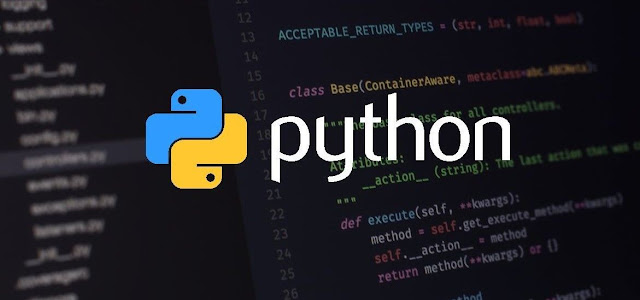Exploring Python: A Comprehensive Overview:
 |
| Python |
History of Python
Python was created by Guido van Rossum during the late 1980s and was first released in 1991. Van Rossum, working at Centrum Wiskunde & Informatica (CWI) in the Netherlands, wanted to develop a language that emphasized code readability and simplicity. Python was inspired by languages like ABC, C, and Modula-3.
The name "Python" was chosen not after the snake but after Monty Python’s Flying Circus, a British comedy series that Guido enjoyed. Over the years, Python has undergone several updates, with Python 3 becoming the most significant milestone due to its modern features and improvements over Python 2.
Author
- Name: Guido van Rossum
- Role: Creator and Benevolent Dictator for Life (BDFL) until 2018
- Contribution: Developed Python to be a simple and effective programming tool for various use cases
Official Website
The official website for Python is python.org. It is the go-to resource for:
- Downloading Python.
- Accessing documentation.
- Exploring tutorials and developer resources.
- Staying updated with the latest Python news.
Syntax:
Variables and Data Types:
- Integer
- x = 10
- Float
- y = 3.14
- String
- name = "Python"
- Boolean
- is_active = True
Control Structures:
If-Else Statements
if x > 0:
print("Positive number")
else:
print("Non-positive number")
Loops:
- For loop
for i in range(5):
print(i)
- While loop
count = 0
while count < 5:
print(count)
count += 1
Functions:
def greet(name):
return f"Hello, {name}!"
print(greet("World"))
Classes and Objects:
Lists, Set, Tuples, and Dictionaries:
- List
- fruits = ["apple", "banana", "cherry"]
- Tuple
- coordinates = (10, 20)
- Set
- decimal = {10.6, 20.8}
- Dictionary
- person = {"name": "Alice", "age": 30}
Error Handling:
Libraries and Frameworks
- Data Science and Machine Learning: NumPy, pandas, scikit-learn, TensorFlow, PyTorch, SciPy, Keras, XGBoost, LightGBM
- Web Development: Django, Flask, FastAPI, Pyramid, Tornado, Bottle
- Automation and Scripting: Selenium, Beautiful Soup, pyautogui, Scrapy, Fabric
- Visualization: Matplotlib, Seaborn, Plotly, Bokeh, Altair, ggplot
- Game Development: PyGame, Panda3D, Cocos2d
- Natural Language Processing (NLP): NLTK, spaCy, TextBlob, gensim
- Image Processing: OpenCV, PIL (Pillow), scikit-image
- Data Analysis and Big Data: Dask, PySpark, Vaex
- Cryptography and Security: cryptography, pycryptodome, paramiko
Community
Python boasts a vibrant and welcoming community. From forums to social media groups and meetups, Python developers are active worldwide. Popular platforms include:
- Stack Overflow: For Q&A and problem-solving.
- Reddit: Communities like r/Python.
- GitHub: Thousands of Python projects and open-source contributions.
- Conferences: PyCon, PyData, and regional Python conferences.
Popularity
According to rankings by TIOBE, Stack Overflow, and GitHub, Python consistently ranks as one of the top programming languages. Its popularity is driven by its:
- Beginner-friendly nature.
- Applications in cutting-edge fields like AI and data science.
- Versatility across domains.
- Support for modern software development practices.
Why is Python Famous?
- Ease of Learning: Python’s straightforward syntax and clear structure make it ideal for new programmers.
- Versatility: It can be used for web development, data analysis, machine learning, automation, and more.
- Strong Ecosystem: Rich libraries and frameworks enable developers to build complex applications efficiently.
- Community Support: A helpful and active community ensures developers always have resources and guidance.
- Cross-Platform Compatibility: Python runs seamlessly on Windows, macOS, and Linux.
Future of Python
Python’s future is bright, with several trends signaling continued growth:
- Integration with Emerging Technologies: Python’s role in AI, ML, and IoT will expand.
- Education: Python will continue to dominate as the language of choice for teaching programming.
- Web 3.0 and Blockchain: Python’s frameworks will find applications in decentralized systems.
- Performance Improvements: Ongoing developments like PyPy aim to make Python faster.
As technology evolves, Python is well-positioned to remain a cornerstone in the programming world.
Conclusion
Python’s journey from its humble beginnings to global dominance is a testament to its design philosophy of simplicity and power. Whether you’re a beginner learning your first programming language or a seasoned developer, Python has something to offer.






.jpg)
1 Comments:
Great Work
Post a Comment